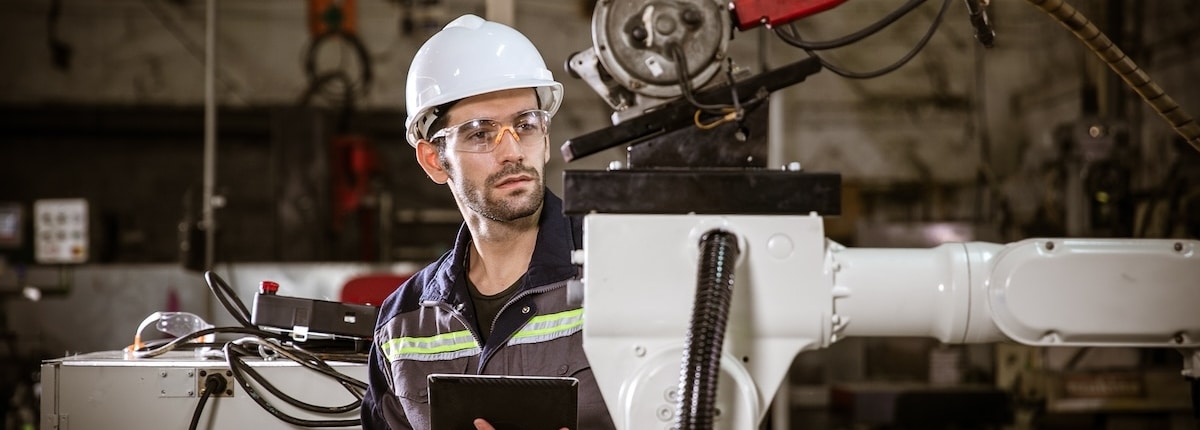Top Five Relocation Risks for Industrial Businesses
When moving an industrial business, there’s a lot on the line. The project can run over budget, unexpected roadblocks can bring the relocation to a grinding halt, and carelessness can put your business and employees in danger. Risk has its place, but that place isn’t your relocation project.
Eliminating risk is a monumental task, but it’s easier when you know where to look.
1. Equipment Damage
Equipment damage is one of the most common and expensive risks during an industrial relocation. Improper handling and transportation are often the culprits, especially with heavy manufacturing machinery.
Industrial rigging and disassembly require specialized skills and equipment, but many companies overlook this need in favor of saving time or money. This often results in expensive repair or replacement costs down the line.
Conduct an equipment audit before the move. This helps to identify vulnerabilities like loose parts, leaks, or signs of wear that could worsen during transport. Address these issues before moving day. Work only with licensed vendors, making sure to perform your due diligence and ensure they have experience with your type of equipment.
It’s also crucial to properly secure and protect machinery during transit with industrial-grade padding, strapping, and containers. Please note that specialty freight carriers require early bookings to ensure they’re available when you need them.
2. Employee Safety Issues
The industrial floor is already a dangerous environment, but it becomes even more hazardous during a relocation. Disorganization, unfamiliar vendors, and the non-typical work environment increase the risk of accidents.
Without clear safety protocols, employees and contractors may not know how to navigate this temporary situation, leading to injuries that could have been avoided.
Prioritize communication and safety planning. Hold detailed pre-move meetings to outline the procedures and ensure that everyone knows what’s happening. Make sure that all of the staff and contractors are aware of key safety protocols, including emergency exits, first aid procedures, and restricted areas.
Only work with trusted vendors who are familiar with your industry and serious about safety. They should keep walkways clear, properly store materials, and coordinate closely with your team to prevent accidents.
3. Regulatory Hurdles
Industrial facilities often require special permits to relocate. Failure to obtain these permits can lead to legal penalties or prevent you from operating in the new location. Inadequate planning, inexperience, or poor communication with regulatory bodies can lead to delays and unexpected hurdles.
Research the legal requirements well in advance of your move. Make sure to secure the necessary permits early to avoid last-minute complications. If your industry has specific requirements—such as special permits for hazardous materials, pharmaceuticals, or food—ensure these are in order.
You will also need to review any local regulations or zoning laws at the new location, including updated environmental or labor regulations. Having a comprehensive checklist of these requirements will help avoid legal headaches and delays.
Helpful Links
4. Vendor & Supply Chain Disruptions
Your business depends on a reliable supply chain, and any disruption during a move can have cascading effects on your operations. Poor planning, an unorganized move, or unreliable vendors can lead to delays in receiving critical supplies.
If employees are not trained on how to maintain operations during the relocation, this compounds the problem and could potentially halt production or services altogether.
Conduct a thorough risk assessment well before the move begins. Identify critical supply chain links and communicate the relocation timeline with your vendors to prevent surprises.
Phase the move in a way that allows for continuous access to mission-critical equipment and supplies. It’s also important to establish contingency plans for potential roadblocks, such as delays in transportation or setup at the new facility. This will help ensure that operations can continue with minimal interruptions
5. Inadequate Facility Readiness
A new facility might look perfect on paper, but once you move in, you could discover that it doesn’t meet your operational needs. Inadequate planning often leads to mismatches in space, layout, or technical capabilities, which can severely hinder your ability to operate efficiently. Problems like insufficient power supply, lack of proper security, or non-compliance with safety standards are common if the facility is not thoroughly vetted in advance.
If the new facility isn’t fully prepared, you may face issues such as:
- Inadequate space for equipment: Your new location might not have enough room to house all your machinery or materials, leading to storage problems or operational delays.
- Inability to occupy or use the facility: You might discover after the move that the facility doesn’t have the proper permits, lacks basic utilities, or has unsafe working conditions, preventing you from using it immediately.
Conduct a comprehensive space plan before the move. Compare the new facility’s layout to your current space. Ensure that all of your equipment will fit properly and in a way that supports productivity. Make sure that utilities, including electricity, water, and HVAC systems, meet your needs. Verify that all permits are in place before move-in day, and address security measures like locks, surveillance cameras, and restricted access to sensitive areas.



